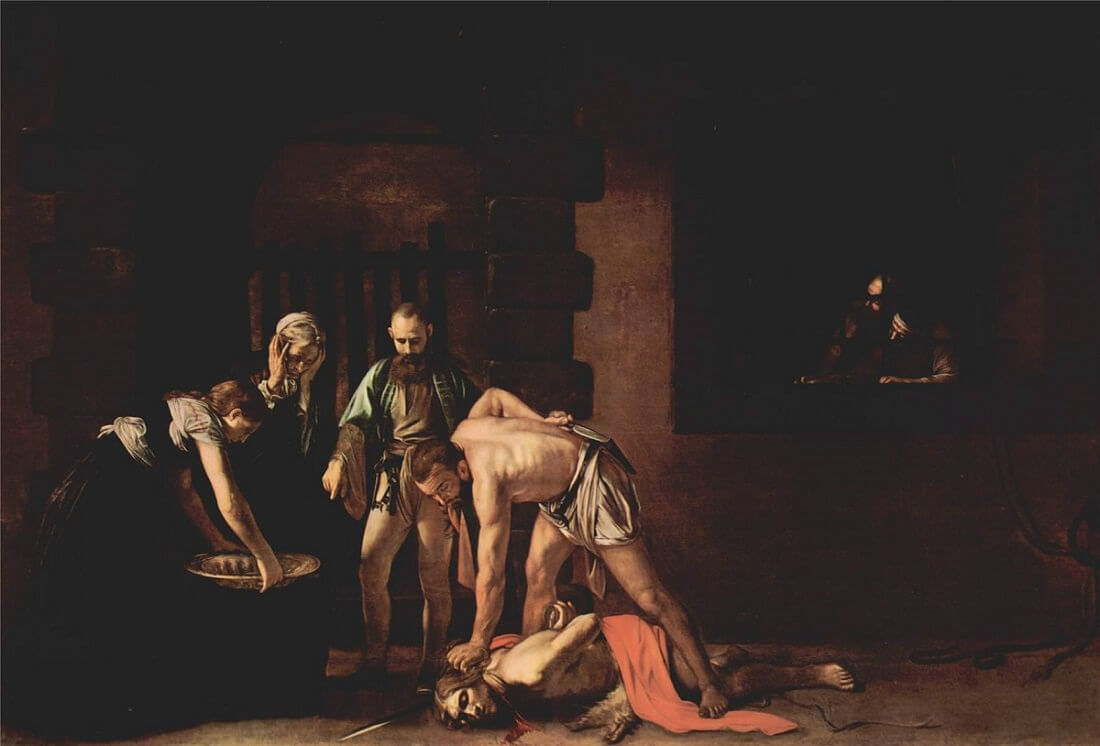Beheading of Saint John the Baptist, 1608 by Caravaggio

The Beheading of St. John the Baptist is Caravaggio's only surviving signed work; the 'f. michelan . . .' which is scrawled in the blood which flows from the Baptist's
throat can be read either as 'fra ['frater' or 'brother'] michelan[gelo da Caravaggio]', in which case the work must date from after Caravaggio's appointment as a Knight of
Obedience of the Order of St. John on 14 July 1608, or as the conventional designation 'facit michelan . . .'. The Latin word fecit' means 'made' or 'did', and the word may well have been
used with deliberate ambiguity in the present context. Caravaggio 'did' the painting, but did he also mean to suggest that he was in some sense responsible for the murder? Even if
the word 'fra' was intended, Caravaggio's involvement in the drama was clearly implied, although this time by means of a more straightforward identification with the victim.
The picture is distinguished by an extensive use of rich browns, rapid brushwork which allows the ground to show through in several places and what can only be described as the greatly
increased 'classicism' of composition. Compared with the such works of his immediately preceding Neapolitan period as the Madonna of Mercy or the Madonna of the Rosary, the main group of
figures in The Beheading is as still and frozen as a monument. The carefully articulated archway of figures, present in the Potsdam Incredulity of St. Thomas, was not a new
device in Caravaggio's art, but its placement in front of a real, architectural gateway and the relative decrease in scale of the figures in relation to the rest of the picture somehow
enhance our perception of the fixed and tragic fate of man within the universe.
















